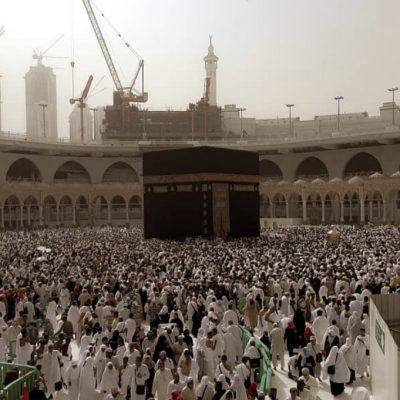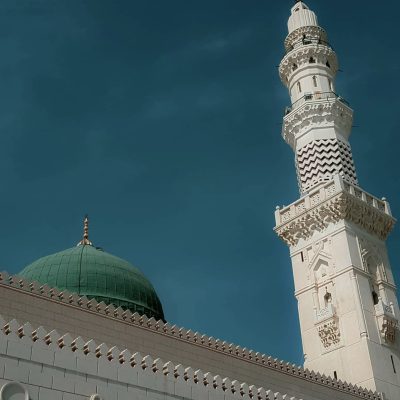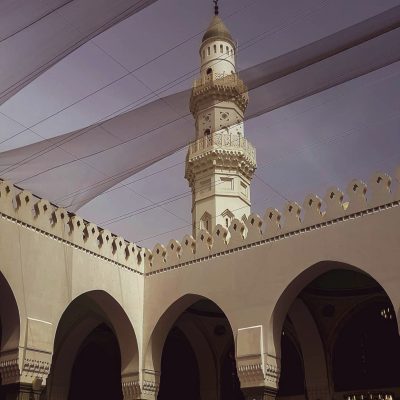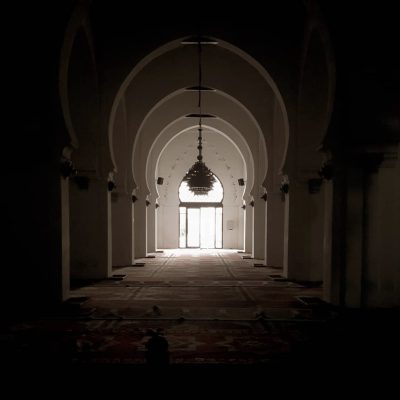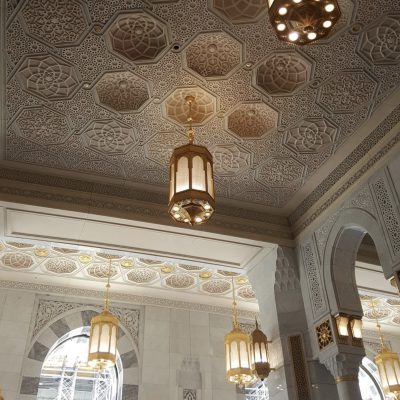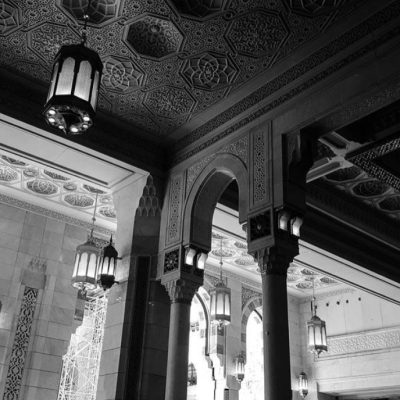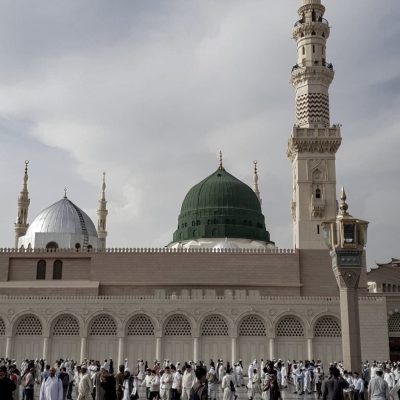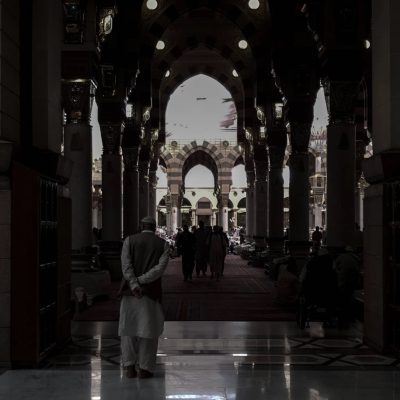Mecca/ Medina
Mecca and Medina, two of the holiest cities in Islam, have a rich and diverse architectural history that has evolved over the centuries. The architecture of these cities is deeply intertwined with their religious and cultural significance, and has been shaped by the influx of pilgrims and residents from around the world.
Mecca, the birthplace of the Prophet Muhammad and the site of the Kaaba, has been a center of religious and cultural significance for centuries. The city’s architecture reflects its importance as a religious center, with many of its most prominent buildings and structures being associated with the Islamic faith. The most famous of these is the Masjid al-Haram, or the Sacred Mosque, which surrounds the Kaaba. The mosque has been expanded and renovated numerous times over the centuries, with the most recent expansion taking place in 2019. The mosque can now accommodate up to 1.5 million worshippers during the Hajj pilgrimage, making it one of the largest mosques in the world.
Another significant architectural site in Mecca is the Jabal al-Noor, or the Mountain of Light, which is home to the Hira Cave where the Prophet Muhammad received his first revelation from Allah through the angel Gabriel. The mountain is a popular destination for pilgrims and features a number of shrines and monuments dedicated to the Prophet Muhammad.
Medina, located about 280 kilometers from Mecca, is the second holiest city in Islam and is home to the Prophet Muhammad’s tomb. The city’s architecture is similarly dominated by religious structures, including the Masjid al-Nabawi, or the Prophet’s Mosque, which is one of the largest mosques in the world and can accommodate up to 600,000 worshippers during peak times. The mosque has been expanded several times since its initial construction in 622 CE, with notable expansions taking place in 1955 and 1994.
The Green Dome, located above the tomb of the Prophet Muhammad within the Masjid al-Nabawi, is another significant architectural feature in Medina. The dome was constructed in 1279 CE and is covered in green tiles, which are said to symbolize Islam’s emphasis on paradise.
In addition to religious structures, both Mecca and Medina feature a number of modern buildings and structures that reflect their growing importance as commercial centers. These include hotels, shopping centers, and other commercial developments that cater to the millions of pilgrims who visit these cities each year. However, despite these modern developments, traditional architectural styles continue to dominate both cities’ skylines, serving as a reminder of their rich historical and cultural significance.
Overall, the architecture of Mecca and Medina reflects their unique history and cultural significance as two of the holiest cities in Islam. From ancient religious structures like the Kaaba and Masjid al-Haram to modern commercial developments catering to millions of pilgrims each year, these cities offer a fascinating glimpse into Islamic history and culture.
Back to Projects
